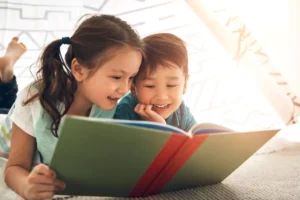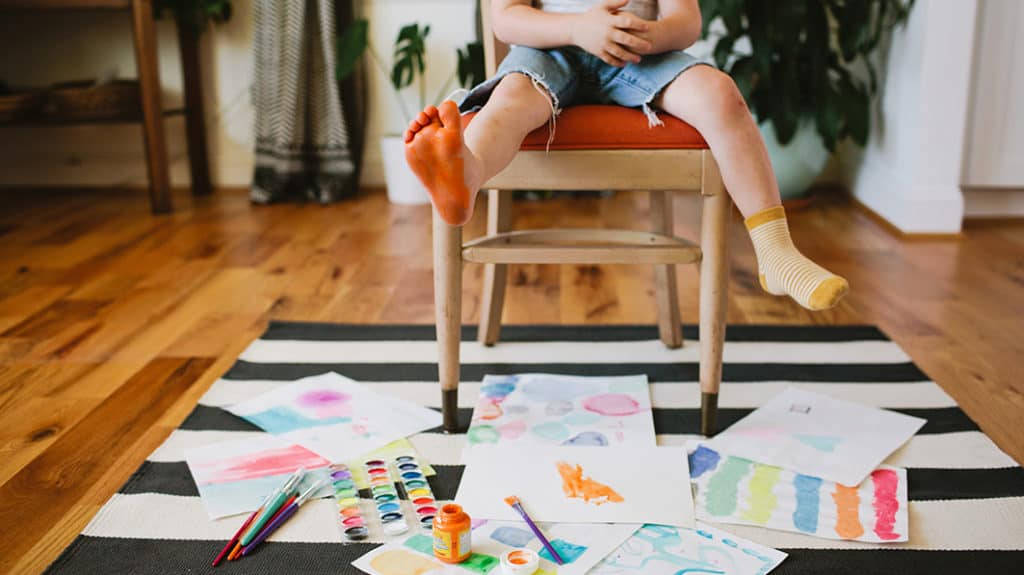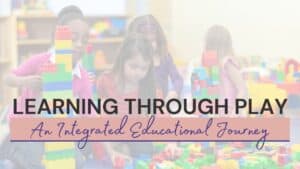In her book The Way They Learn, author and educator Cynthia Tobias teaches that kids usually understand information either globally or analytically. A global learner may prefer working in a team, is often sensitive to others and tends to see the big picture instead of every detail. An analytic learner likes order, values facts over feelings, is logical and seeks justice.
In the same way, people tend to learn through a mixture of auditory, visual and kinesthetic tools. Use the following to help figure out ways to encourage your children to learn.
Auditory
Learning that is focused on what children hear
From the time my daughter was a baby, we could see that she was intrigued by different sounds. She loved music and was very aware of her surroundings, particularly when it came to what she could hear. As a toddler she would wake up singing, and language came easily for her.
As a 10-year-old, she was asked to memorize lists and challenging concepts. We taught her how to turn her studies into songs. Sectioning the material into sentences or phrases and then adding them to familiar melodies proved fun and productive. She could better remember her studies during tests by privately singing these songs back to herself.
She also learned lists, formulas and geography by reciting them in a rhythmic manner over and over again. Many nights we could hear our daughter rehearsing the material she would be tested on.
How can I encourage my child’s auditory learning?
- Have her read her textbook or novel aloud, record it and then listen to it.
- Let him sing his study notes.
- Try playing background music as your child studies.
—Randi Perez Helm
Visual
Learning that allows children to process information through their sense of sight
When we read stories together at night, I’d have a pencil and paper available to sketch out the more complicated parts of a scene to help my kids better engage in the story. This seemed to make the story come alive for them.
After we moved to another state, I encouraged my kids to make a “truth” board. They cut out words and pictures that showed their strengths — who God says they are. This seemed to help with that big life transition.
When my daughter’s mind raced, we eventually got her a “worry box.” She wrote down her worries and put them in the box. Then we’d put her concerns on the shelf for the night.
How can I encourage my child’s visual learning?
- Encourage him to look at the pictures in a book before reading it.
- Give her a bulletin board she can use to post the material being studied.
- Help him create and use flash cards on the subject.
- Set up an aesthetically pleasing area, free from distractions, where she can study.
—Teresa Jansen
Kinesthetic
Learning that takes place through physical interactions with concepts and materials
My 5-year-old prefers playing in the creek or the woods over a trip to the library. She loves being outside and moving. So I’m not sure why I thought the dining room table was the ideal place to teach her to read.
Day after day, we sat on tall dining-room chairs and argued about letters, words and how to sit still. One day as we were relaxing on the sandy beach along the creek, she wrote her name in the sand with a stick.
“That’s wonderful!” I exclaimed, and we embarked on a journey in kinesthetic learning.
I researched the most common sight words for children, such as a, and, are, for, have, said, the, etc., words that kids should know on sight. At the creek, she learned to read and write 10 of them in the sand.
We also discovered how to make sight words and phonemes out of rocks and sticks. While creating each letter, we practiced making the sound and naming words that start with the letter. When indoors, modeling clay worked well, too, but we also repurposed beans, popcorn, crackers and cereal.
One of my daughter’s favorite activities was collecting 26 palm-sized rocks. We washed them and painted one letter of the alphabet on each rock. She loved arranging them to create words and practice letter sounds.
How can I encourage my child’s kinesthetic learning?
- Stop for 10-minute breaks every 20 to 30 minutes.
- Allow him to move (pace, jump, etc.) while memorizing words or studying information.
- When possible, give her permission to physically act out what she’s learning.
- Find supplemental projects and events to help your child’s learning, such as visiting kids’ museums or building models.
—Stacey Pardoe
Download these free games to reinforce reading concepts:
Have fun while learning about compound words.
Encourage kids to read more.

















